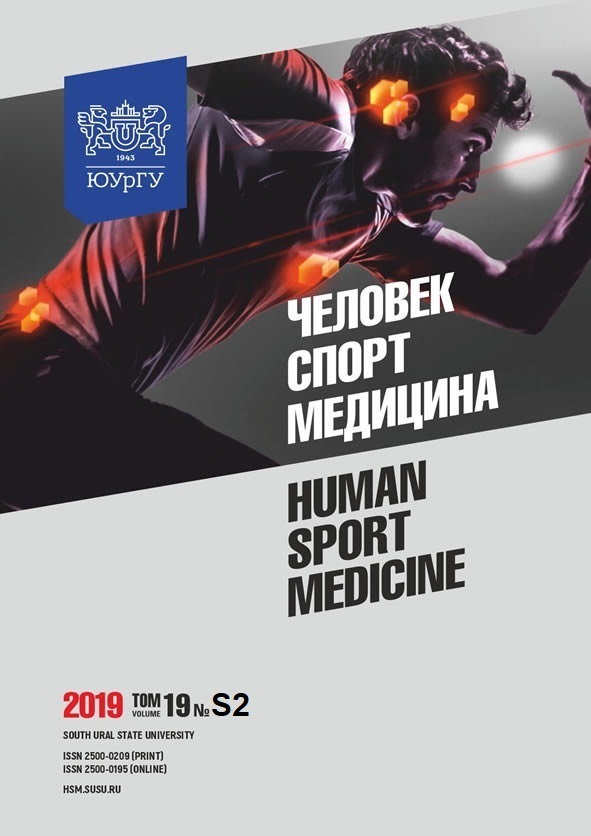THE DEVELOPMENT OF A PASSIVE EXOSKELETON FOR REHABILITATION OF THE LOWER EXTREMITIES IN CHILDREN WITH CEREBRAL PALSY
Abstract
Aim. The purpose of the article is to conduct a comprehensive therapy using various means of rehabilitation, which will allow to correct the existing motor dysfunction. Materials and methods. The research was conducted at the Research Center for Sports Science (Institute of Sport, Tourism and Service, South Ural State University, Chelyabinsk) from September 2019 to December 2019. In total, 15 children aged from 4 to 8 years participated in the study after providing their voluntary consent. To determine the range of motion in the joints of the lower extremities, the BioDex robotic equipment was used. Rotational angles of the knee ( ), hip ( ), and ankle joint ( ) were obtained. SolidWorks software was used to develop a 3D model of the product. Results. Anthropometric data of healthy people aged from 4 to 8 years were obtained and statistically processed. Using this data, the basic linear and spatial parameters of the elements of the designed device were calculated. Computer simulation of the exoskeleton was performed in the SolidWorks computer-aided design system with the ability to change the basic parameters of the device in accordance with the anthropometric data of a particular patient. Conclusion. A prototype exoskeleton was made using 3D printing technology for further testing. If necessary, a 3D model of the exoskeleton will be adjusted to test this device in practice for the rehabilitation of patients with cerebral palsy
References
References on translit
Copyright (c) 2020 Human. Sport. Medicine

This work is licensed under a Creative Commons Attribution-NonCommercial-NoDerivatives 4.0 International License.















